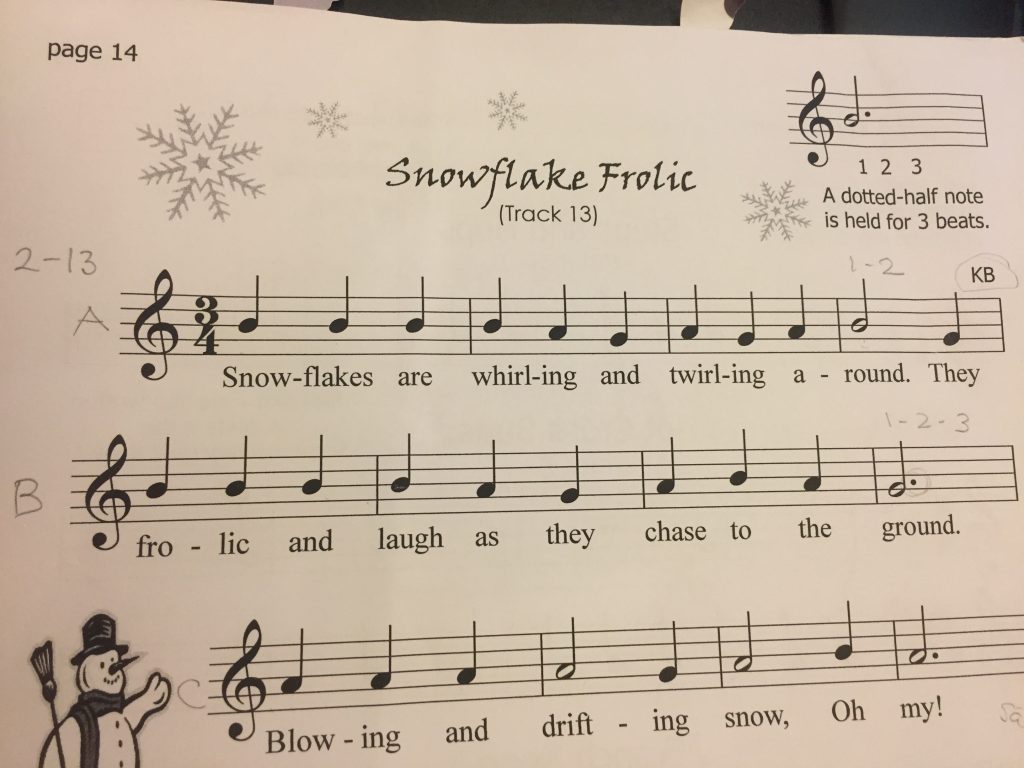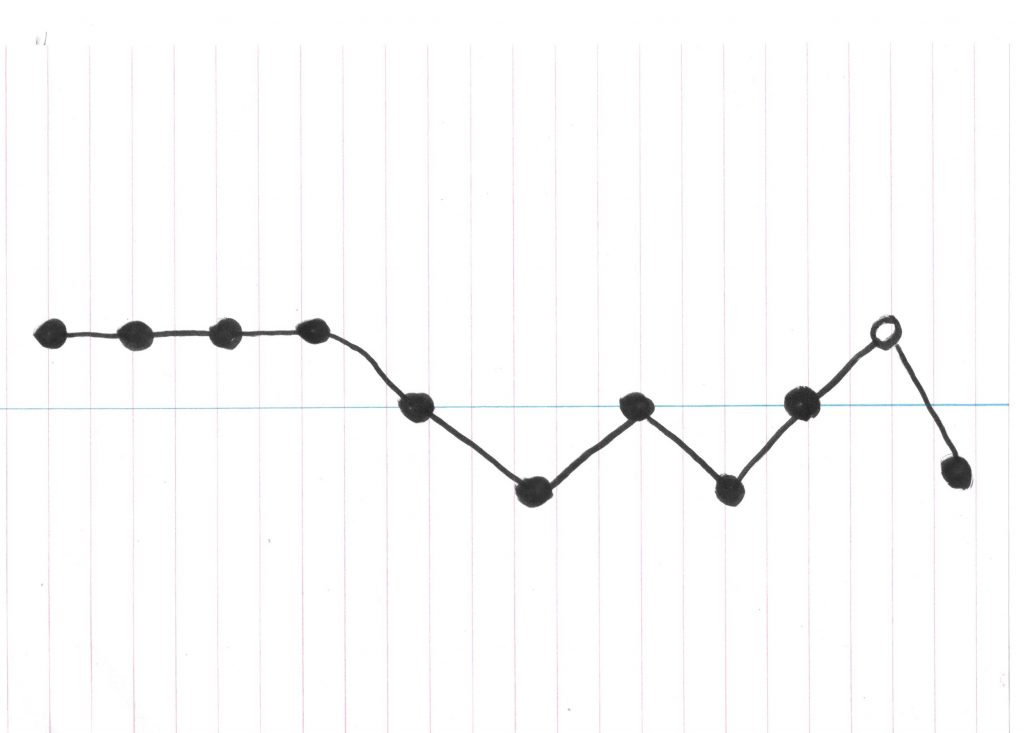Note Reading: Following the Contours
- Marlene
- Blog, flute, Uncategorized
- 1 Comment
Note Reading: Following the Contours
Note Reading is one of the most fundamental, but difficult, skills for beginner musicians.
In this blog post, I will share with you one of the novel approaches invented by a student and her father for reading simple melodies.
Rachel* (not her real name) was having trouble with note reading. She is nine years old and began playing the flute about a month ago. At a previous lesson, I had worked with her on seeing how a melody walks up and down by steps. We drew lines over the notes indicating the rise and fall of the melody. Rachel is a beginning student and she has learned the notes B-A-G but has trouble identifying them on the staff.
Over the next week as he helped Rachel with her lesson assignment, Rachel’s dad came up with a great new way to think about reading the contours of the line. This is a page from Rachel’s book showing a simple melody with the notes B-A-G.
Rachel’s dad asked her to draw dots in a line to represent the pitches. Then he asked her to connect the dots. The first four measures looked like this:
Reminding Rachel to begin on the note B, I asked her to play the melody while looking at the dots. When the dots went down, she added one finger. When they went up, she lifted a finger. Success!
After playing the melody this way a couple of times, we compared the dots on her paper with the dots (notes) in her lesson book. It was easy for her to see the contour. Rachel was able to play the entire exercise with few mistakes. She was happy and so was I.
I wish I could take credit for this innovative approach, but it was Rachel’s dad who came up with this solution. He understands better than anyone how Rachel thinks. He knows that she is a visual learner but needs to have the information simplified. The regular music staff in the book had too much distracting information for Rachel to process. She was confused about the stems on the notes and was having difficulty focusing on the five lines. This very simple method eliminated all the unimportant information and made the contour easy to see.
This trick worked great today with a simple stepwise melody on three notes. It’s a solution for today, not a panacea. Tomorrow, it will be another challenge and we’ll find new, innovative ways to learn together.


1 comment